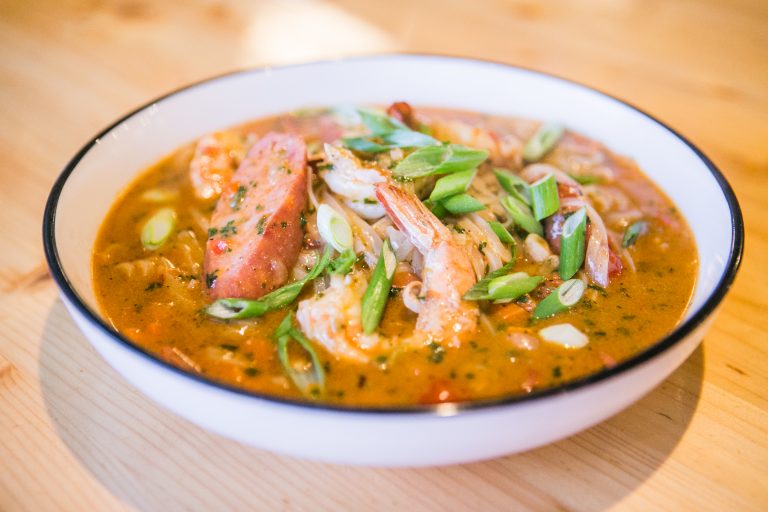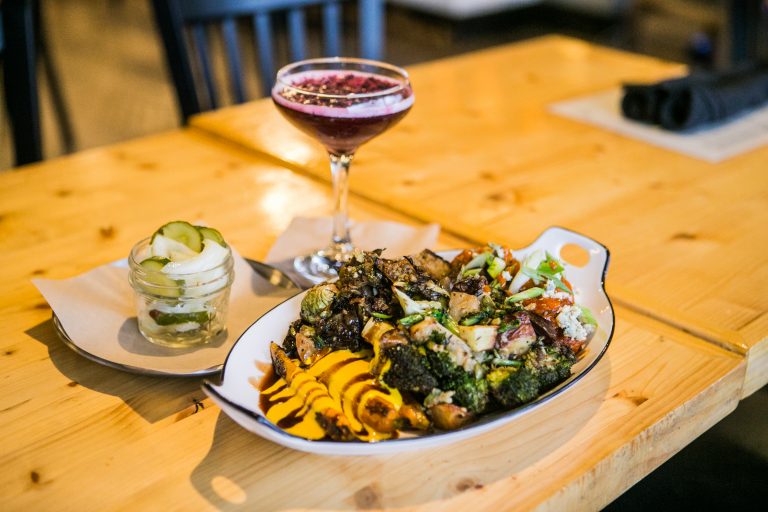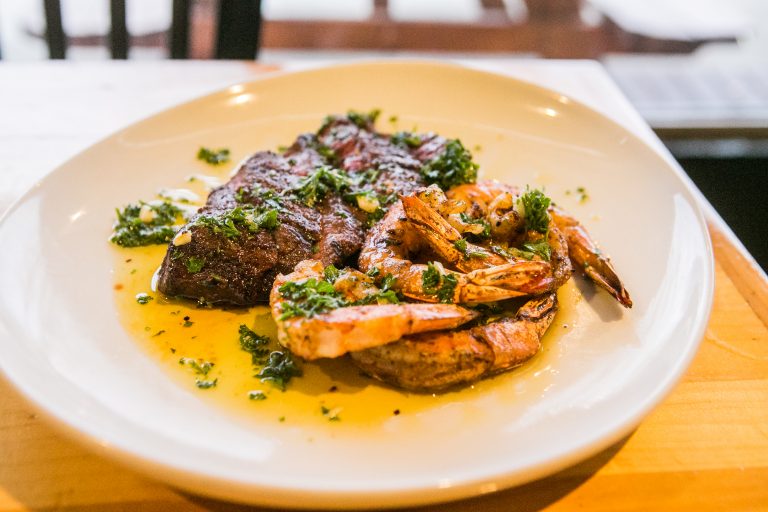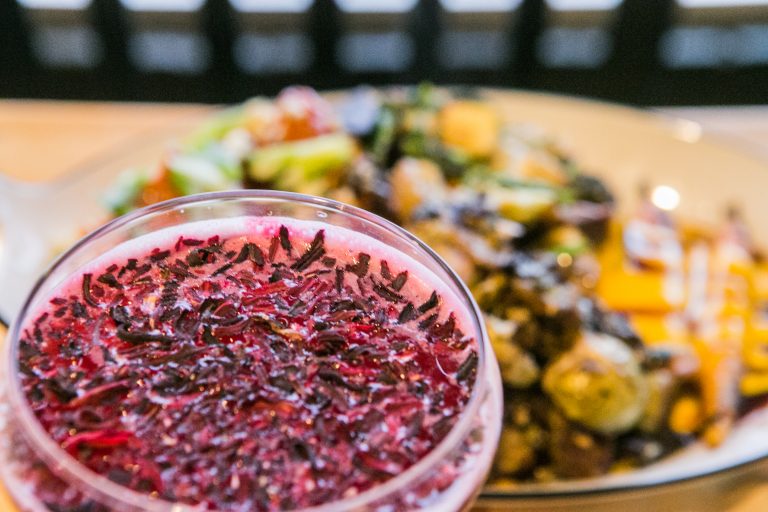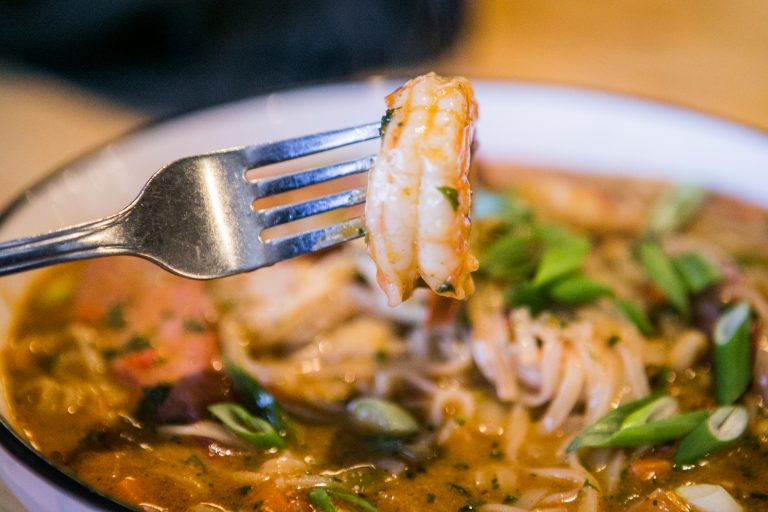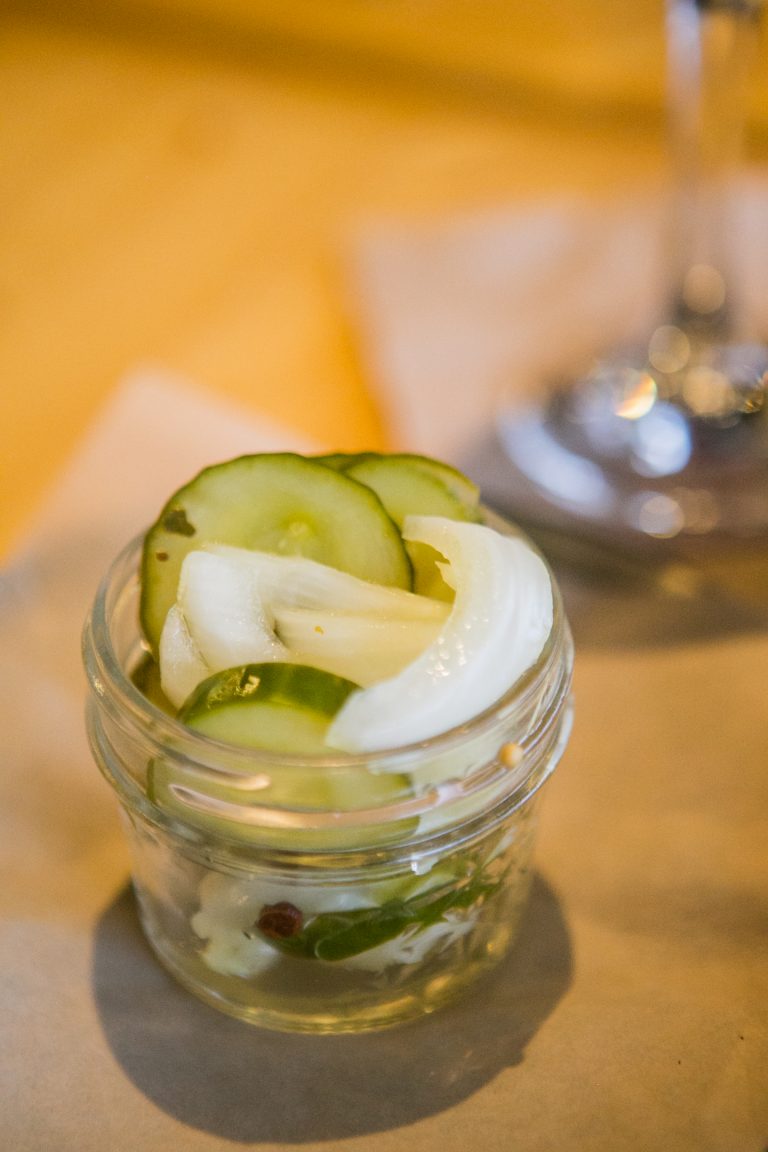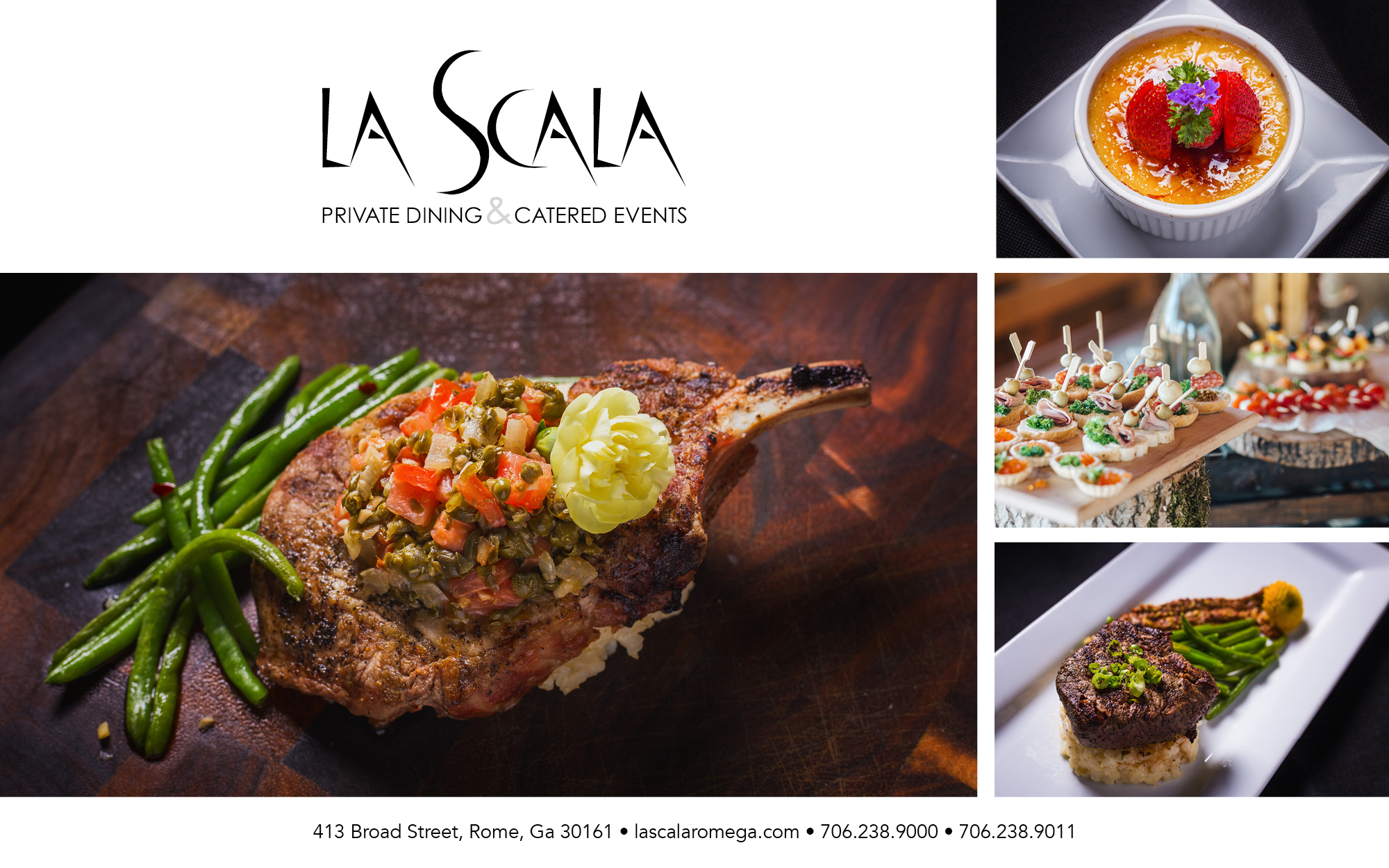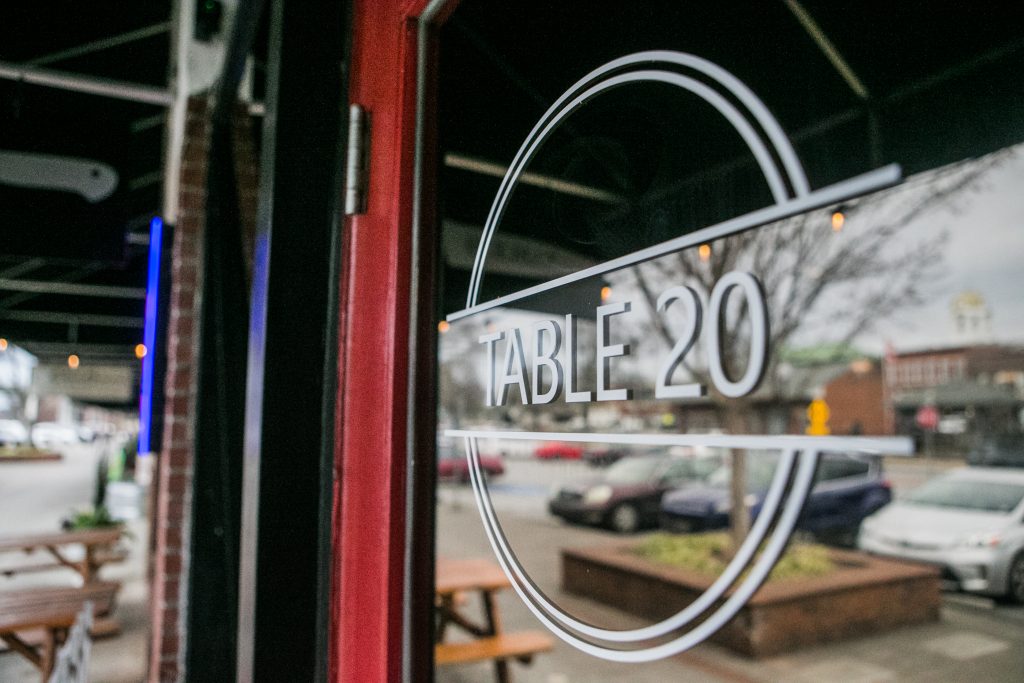
Photos Rob Smith
Eat, drink, and visit: that’s a simple recipe for a good time, and it’s one that Table 20, of Cartersville, Georgia, invites its patrons to enjoy. The menu is all about scratch-made creations—tasty, honest food, cooked with fresh, seasonal ingredients. The restaurant’s owner, Allie Bearden, and its executive chef, Christian Farrar, work hand-in-glove toward their goal of making Table 20 the eatery that sets a standard of creativity for the local dining industry to follow.
From international experience to local flavor
Famously, restaurants are a tremendous challenge to open. Exhausting, time-consuming, money pits. And that’s all before the very first customer is served. “My parents and I worked day and night from somewhere between six to eight months,” says Allie Bearden, when explaining how she started Table 20 in 2016. “There’s a lot of sweat equity in this place. And there was a lot in this building that needed changing.” She gives a little laugh and adds, “This place used to be a Quiznos.”
Becoming a restauranter was hardly a childhood dream for Bearden, but she later discovered a natural inclination toward business. Though not a chef herself, she got her business acumen from her father, who taught her by his example. Growing up in such diverse cultures as Oregon and Germany, she learned from her entrepreneur father how business worked. “I watched him,” she says, “and I got to see all that first-hand.”
Later, after earning her degree from the University of Oregon, Bearden moved to Cartersville to be near family who lived in Tennessee and Georgia. Before long, Table 20 opened at 20 S Wall Street.
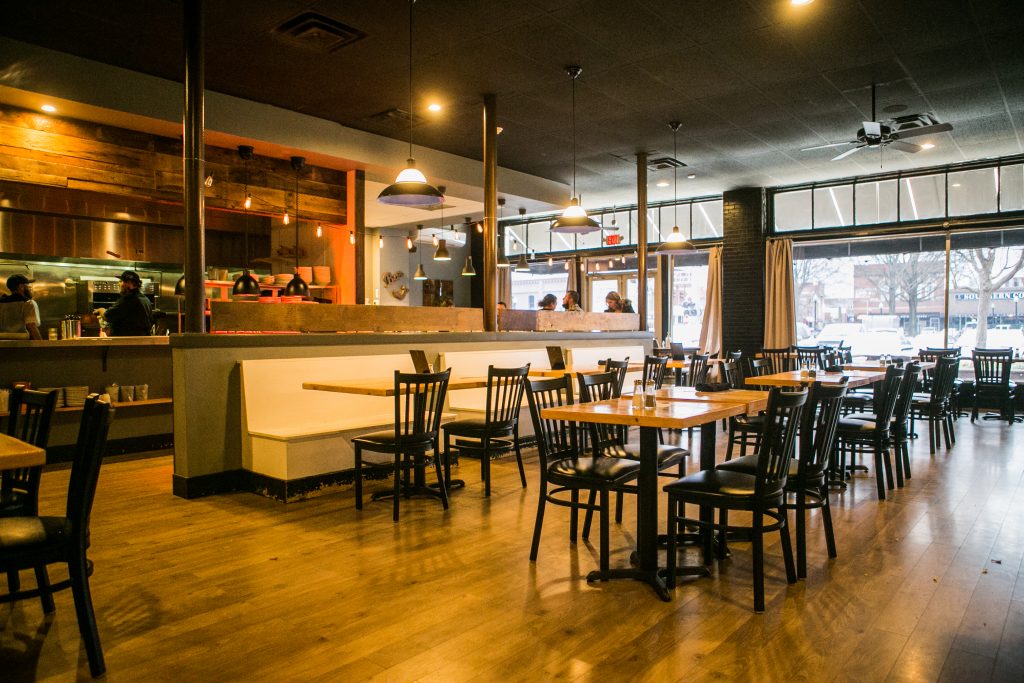
At home in the kitchen
A Georgia native, Christian Farrar grew up in the Woodstock/Canton area. By his middle teens, he had his first kitchen job in his brother’s Canton restaurant, a small sandwich shop. By the time he was 16, he worked there full-time. He learned fast, eventually becoming the kitchen manager.
At the age of 18 Farrar moved to Boston, where he worked for a couple of good kitchens. As is common in the restaurant business, the work took its toll on him. “I worked 60 hours per week for two years,” he says. “Eventually, I got burned out, so I started working the front of the house.”
Finally, homesickness drew him back to Georgia, where he took a break from the restaurant business for a while. But Farrar was not destined to stay away from cooking for long; his interest was reignited in an unusual way. “I got reconnected with food through a hobby of mine: foraging for mushrooms,” he says. “I rediscovered my spark and went back to cooking.”
When Bearden hired him on as executive chef, Farrar assumed he might stay a few months before moving on, but something about the work anchored him there. He explains, “It was sort of like rehabilitation for me, cooking-wise. Now I’ve been here over two years.” And it wasn’t just the restaurant that held him, either; he also fell in love with Cartersville. “There’s a ton of hiking and foraging opportunities in the area,” he says. “It’s an easy town to love if you’re into those types of things.”
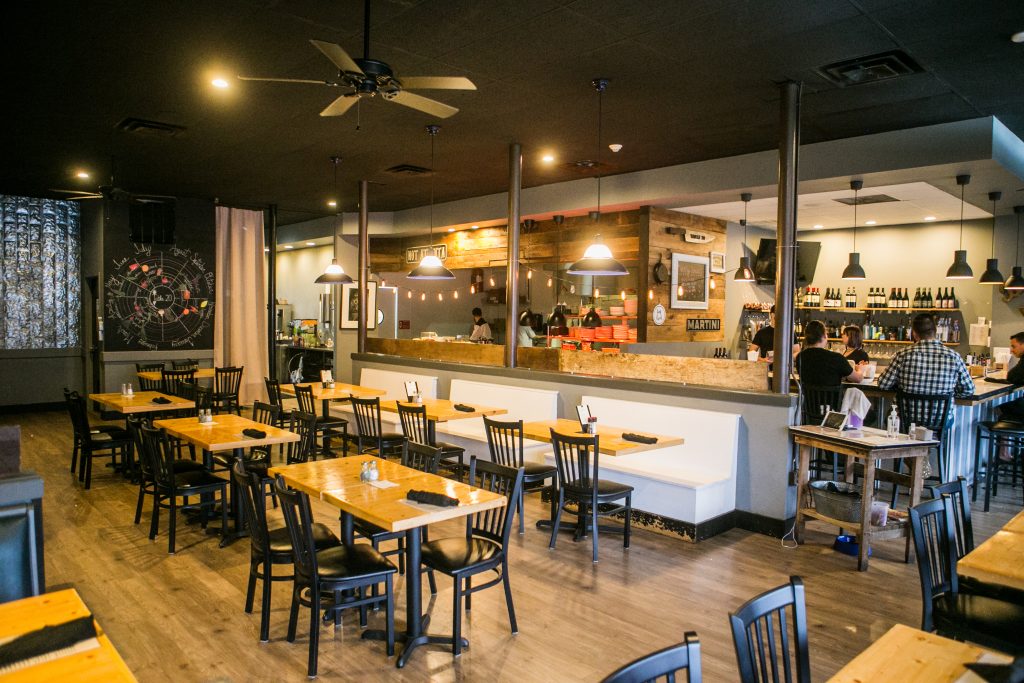
Challenges and creative choices
Unlike many restaurants, when Covid hit, Table 20 never shut down. Bearden says, “For the first month or so, Christian and I worked in the kitchen alone. We worked from sunup to sundown, creating menus daily. We just powered our way through, and now much of our success is due to Christian’s creative menus.”
Though working hard during those early Covid days, Farrar found occasion for a good deal of anxiety. He says, “Every day I would wake up and wonder if this was my last day cooking professionally.” He goes on to explain, “My family is in the industry—everyone I know and love are in the industry—so I felt like I was living in a Bubble of Doom. Everyone was scared.” Fortunately, Bearden and Farrar were able to make the most of that time, experimenting in the kitchen, trying different ingredients, creating new dishes. Farrar says, “I grew a lot during Covid.”
Also, there were new opportunities at hand. Since so many restaurants were closed (some permanently), hungry customers needed somewhere to eat. Table 20 set about to fill in the gap for the different types of cuisine that were suddenly missing in the local area. “For instance,” Farrar says, “a lot of Chinese places were closed, so we did Chinese food.
I learned so much technique, preparing all those different menus. People wanted to have more choices, so we had to give them a little bit of everything.” Bearden says, “That whole time was a lot of work, but it turned out to be a really good period of growth for us, and for me personally.”
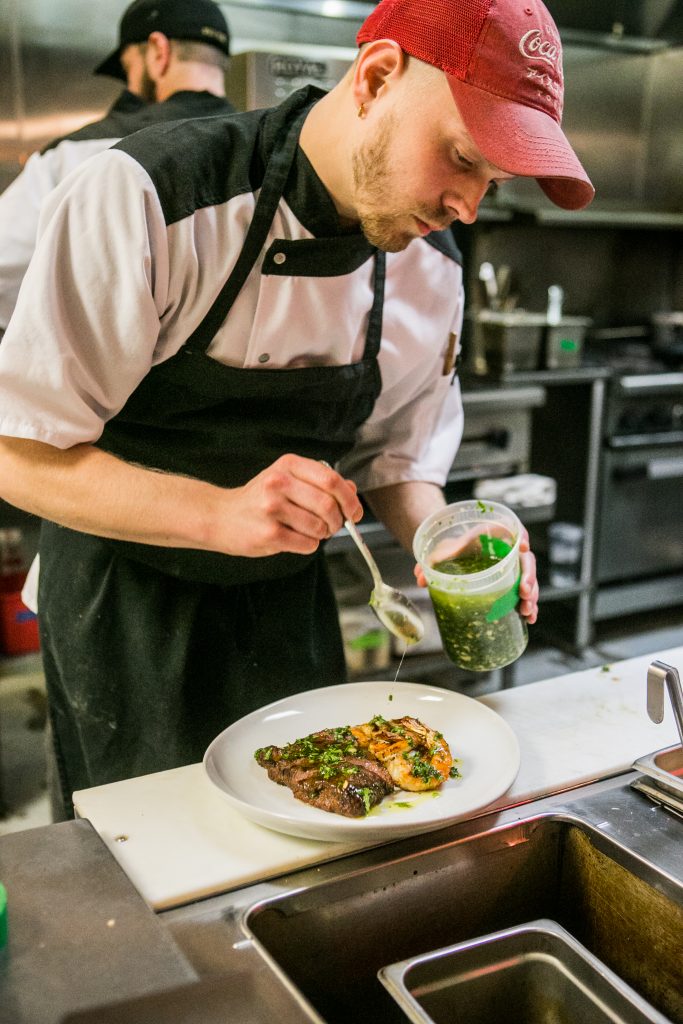
Differently familiar
When asked to describe Table 20’s present menu, Farrar says, “My goal is to keep the place intentionally casual, but I also want it to introduce people to some real techniques. We’re not afraid to use French techniques, Asian techniques, and interesting ingredients.” Their aim is to create a modern Cartersville cuisine, something local, with a seasonal flair. Farrar says, “The term American cuisine is so broad; it doesn’t speak to the region where you are.”
He goes on to point out that the food in, for instance, San Francisco is American cuisine, too, but it is always going to be very different from what one might find in Georgia because of the differences in the produce readily available in each place. “We want to respect where we are,” he says, “and move forward with what we have and what people in this area want—and, of course, with what we want to cook.”
Bearden and Farrar refer to Table 20’s menu as hyper seasonal. Since they have different ingredients coming in by the week, their offerings to their patrons differ accordingly. Farrar says with a chuckle, “The summers are so hard for me because we have so much great produce—we can cook almost anything. It’s hard to choose. In the winter, though, things become a little more steady.”
An Asian twist on an American favorite
Table 20 always wants to cook food people love, but they also enjoy adding surprises to their menu, unexpected dishes that introduce their customers to an unusual update of some well-loved standard. As an example, they now offer a jambalaya that is perhaps best described as Asian-Cajun-fusion. Farrar got the idea on a cold day when he wanted something hot and hardy to eat. He thought of the kimchi stew that he loved, but he had only found it available at Asian markets. Kimchi is a traditional spicy Korean dish made from cabbage that has been pickled and fermented.
This craving inspired Farrar to find a way to add kimchi to the menu at Table 20. However, he knew the strong taste may be too much for the average local’s palate, so he cast about for a creative solution. He found that answer in combining kimchi with another of his favorites, Cajun jambalaya. Farrar began by taking the tomatoes (from the jambalaya recipe) and fermenting them in a kimchi way.
Then, through some experimentation with ingredients, he found the right combination that brought the two dishes into harmony. Farrar says, “It worked so well because the flavors complemented each other, all the spices influenced each other in a great way.” He further explains that the reddish colors of the two dishes brought them together visually, and the rice made the whole thing work. “It’s my favorite dish in the restaurant right now,” he says. “It’s developing a bit of a cult following among our customers, and I’m proud of that.”
The right meal, just in time
When asked what makes a meal a good meal, Farrar answers with one word: “Timing.” As he sees it, timing is what Table 20 is all about. He says, “Sometimes you may want a big bowl of creamy, delicious pasta. But some other time it may be 100 degrees outside, so that would not be the perfect meal. You may want something like fresh berries.
Timing is the key to the perfect meal.” Farrar points out that often people come to a restaurant not knowing what they want to eat. In that case, as a chef, he wants to “scratch that spot they didn’t even know was itching.” To use another metaphor, he adds, “When we can cook something that hits that nail right on the head for the customer, that’s what gets me excited.”
Where to go from here
Both Bearden and Farrar are enthusiastic about where Table 20 is right now and where it seems to be headed. Bearden says, “We eat, live, and breathe Table 20 day after day, and we’re in a growth period right now that we’ve never seen before.”
That growth is fueled by education. As Bearden and Farrar learn, they strive to pass that knowledge on to their customers. Bearden says, “We want to educate them on different concepts and techniques and ingredients. We love to do that with food. And I love to do that with wine.” Though the restaurant has a bartender, Bearden has taken on the responsibility of buying the wine herself. This is a love she inherited from her father. Growing up, she often heard him say, “Life’s too short to drink bad wine.” She says, “I love to find affordable wines that are great, different varieties from around the world.”
Like good wine, delicious food strikes an emotional chord with people. Farrar explains that appetizing aromas evoke emotional responses that are based on pleasant memories. He says, “Food is nostalgia. In preparing food, we’re drawing from people’s childhoods. We don’t intentionally try to cook comfort food, but food can be very comforting. Aromas trigger an emotional response that takes people back to a time when they really enjoyed a meal with their friends and loved ones.”
So, back to that simple recipe for a good time: eat, drink, and visit. That’s what Table 20 offers. It’s not just about a good meal; it’s also about feeling good about it in the process.
Get ready for delicous at www.table-20.com



